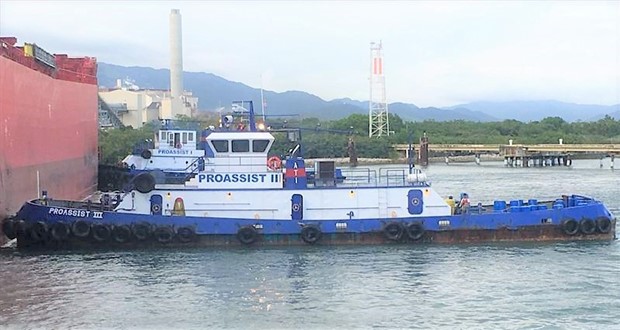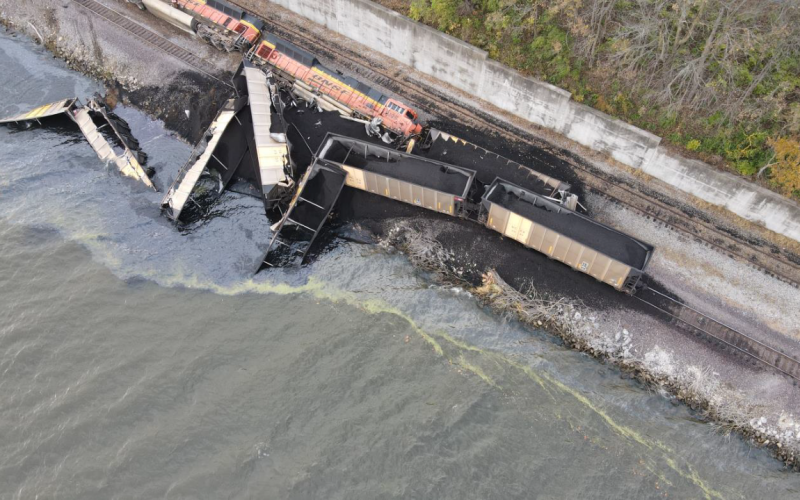A quick way to understand what occurs on your vessel when critical maritime safety issues are ignored, forgotten, or never understood in the first place is by reading the Safer Seas Digest.
Since 2014, the National Transportation Safety Board’s Office of Marine Safety has published the Digest, an annual publication organized around NTSB marine investigations completed during the previous calendar year. The Digest shares safety issues identified and recommendations developed during these investigations with the marine community. It also highlights lessons learned that can prevent or mitigate future losses. The 2021 edition looked at 31 marine accidents with an informative lessons-learned section that focuses on hazards critical to each accident.
The 2022 edition has yet to be published but the following are several accidents based on NTSB reports that might be included. The accidents include a sinking, probably due to a misplaced deck plate; the meeting between four empty barges and a coal train due to the improper reading of an electronic chart; an engine room fire with faulty fuel tank ventilation; and a fatigue-induced collision with an oil and gas production platform.

SINKING
The Proassist III sank on Dec. 24, 2020. The 111'× 27'6" towing vessel, which was built in 1949 by the Nashville Bridge Co., in Nashville, Tenn., was steaming three miles off Puerto Rico, enroute from Laguna de la Mareas to Yabucoa. Shortly after departing, the vessel encountered deteriorating conditions, with gusty winds and 5'-to-6' seas. A captain and two deckhands were onboard. One of the deckhands was also the engineer.
The Proassist III was pitching and rolling when a deckhand noticed the stern was “riding a little low” with water in the flanking rudder compartment. An attempt to empty the compartment using an emergency, diesel-powered pump failed when the pump was hit by a wave. Shortly after, the Proassist III was down by the stern with about a foot of water on deck, with winds increasing and more waves coming over the stern.
At 1742, the captain radioed the Coast Guard to tell them they were abandoning ship.
However, the attempt to abandon the vessel became complicated when the straps around the center of the life raft canister failed to break upon launch, restricting expansion of the raft. The captain went into the water and cut the straps, but then decided the crew should remain on the Proassist III and await rescue as the engine room had not yet flooded.
Around 1840, about an hour after sunset, a 15' Good Samaritan fishing boat, responding to a call from the Coast Guard and the Proassist III owner, rescued the crew and took them to Puerto Yabucoa. Ten minutes later, the captain said, he could see the Proassist III sinking by the stern. The vessel came to rest upright in 30' of water, some 450 yards off the coast.
The Proassist III was refloated and taken to Puerto Yabucoa on Sept. 27, 2021. It was determined that unsecured or open aft deck hatches caused flooding of aft compartments and progressive flooding of other compartments though openings in bulkheads, including nominally watertight bulkheads. Additional causes of flooding were the “owner’s lack of an effective hull inspection and maintenance program.”
The NTSB report’s conclusion emphasized that an effective hull maintenance and inspection program should identify steel wastage and watertight integrity issues and ensure that corrosion issues are addressed.
PLATFORM COLLISON

If fatigue was a contributing factor in the Mary Lynn’s fire, the NTSB found it was the sole reason the 150'×36' offshore supply vessel Elliott Cheramie collided with the oil and gas production platform EL-259A, 77 miles southwest of Port Fourchon, La. The Elliott Cheramie was built in 1998 by Bollinger Shipyards, Lockport, La., for Cheramie Marine LLC, Larose, La.
There was eight-nautical-mile visibility with a full moon on June 25, 2021, when the Elliott Cheramie left Port Fourchon at 2000 with four crew and five offshore workers, heading for the oil and gas production platform VR-397A. At 2345 the mate, who had worked for 41 years in the maritime industry, relieved the captain in the wheelhouse. The mate had been awake for 19 hours.
The deckhand, the other member of the watch, along with the mate, had set his alarm for 2344 but did not wake up and was not woken by the deckhand coming off his watch turn. The Elliott Cheramie was on autopilot, while the mate, “more tired than usual” walked the wheelhouse and bridge wings to stay awake. Once he sat in the wheelhouse chair, though, he fell asleep. Neither the radar nor electronic navigation chart had audible alarms. When the mate woke, platform EL-259A was “dead ahead.” Pulling back on both engine throttles didn’t help. At 0245 the Elliott Cheramie struck the EL-259A.
The NTSB determined the probable cause of the collision was the owner/operator not adhering to the company’s 12-hour work-hour limit policy. The mate had worked 19 hours the day before the accident, 16 hours the day before that, and 14.5 hours the prior two days. That contributed to a very fatigued mate falling asleep while on watch.
There were four minor injuries and $363,000 in damage to the Elliott Cheramie, the EL-259 platform, and pipelines.
TOWBOAT, TRAIN COLLISION
On Nov. 13, 2021, the 120'×35', 3,600-hp towboat Baxter Southern was pushing four empty barges down the Upper Mississippi River. At the same time a BNSF coal train, comprised of two locomotives and 10 hopper cars loaded with coal, was coming upriver on tracks along the shore.
The towboat, owned by Southern Towing Co., and its barges encountered strong gusts of wind that day, leading the towboat’s captain and pilot to determine it was no longer safe to continue downriver. The towboat’s electronic chart system seemed to show an area along the riverbank where it would be safe to push the barges up against and get out of the wind. That’s what they did, pushing the forward port barge up on the shore, with the rest of the tow and the tug at about a 45° angle to the riverbank.
Then the Baxter Southern’s pilot saw the light of an approaching train and attempted to move the tug and tow away from the riverbank, while the train’s engineer activated the emergency brake. But it was too late to avoid the forward barge, which was a foot over the railroad ties. When the barge and train met, both locomotives and 10 hopper cars loaded with coal derailed. Six hopper cars ended up in the river.
The probable cause of the crash was the towboat captain and pilot not being proficient in using the electronic chart system, the NTSB said, leading them to put the barges against a shoreline that was identified on the electronic chart as a caution area. The collision resulted in $1.9 million in damages to the locomotives and freight cars. Two of the train’s crew received minor injuries. The barge only had minor scrapes.

ENGINE ROOM FIRE
Another Upper Mississippi River incident involved the Mary Lynn, a 141'×35' towing vessel owned by Missouri River Towing. On May 18, 2021, after the towboat had just fueled up with 25,500 gals. of ultra-low-sulfur diesel for its two 3,800-hp, 16-cylinder EMD 645-D3A supercharged diesels, the Mary Lynn connected with two barges and headed three miles upriver to pick up more barges. But just after getting underway at mile 176 near St. Louis, the starboard engine’s rpm level wasn’t increasing, so the Mary Lynn returned to its dock.
After the chief engineer informed the captain that the issue had been resolved, the Mary Lynn proceeded upriver at 0639. The engines were at nearly full-ahead, and the Mary Lynn was making 2.5 to 3 mph into the current when the chief engineer, working between the two main engines, heard a “pow” and saw a glass bowl — the fuel supply bypass sight glass bowl — blow off the spin-on fuel filter assembly on the forward end of the port main engine. Fuel sprayed straight up “and it was all on fire.”
The engineer was unable to reach the fuel shut-off valve before the engine room windows blew out. When the engineer reached the engine room’s upper deck “the whole area was in flames,” he said.
In the wheelhouse at about the same time (0652:46) the captain heard a VHF call stating, “Hey Mary Lynn’s on fire.”
About two minutes later, the Mary Lynn lost power, leaving it with no firefighting capability. About the same time Good Samaritan vessels came to the Mary Lynn’s aid to fight the fire and help hold the Mary Lynn and its barges in place. At 0715 a fireboat arrived and the fire was extinguished at 0810. Mary Lynn’s damages were over $700,000.
The NTSB found that the probable cause of the fire was over-pressurization of the fuel day tanks — which did not have an independent vent — and the main engine fuel return system. Also, the NTSB noted that the fatigued chief engineer, who said he’d had less than five hours of sleep in the previous 24 hours, left the overflow valves to the storage tanks closed. That led to the ignition of diesel fuel spraying onto an uninsulated engine component.




